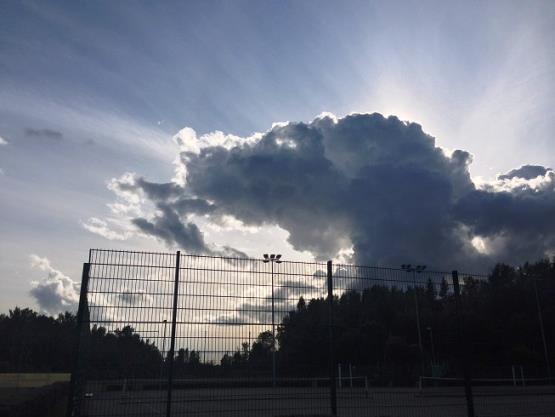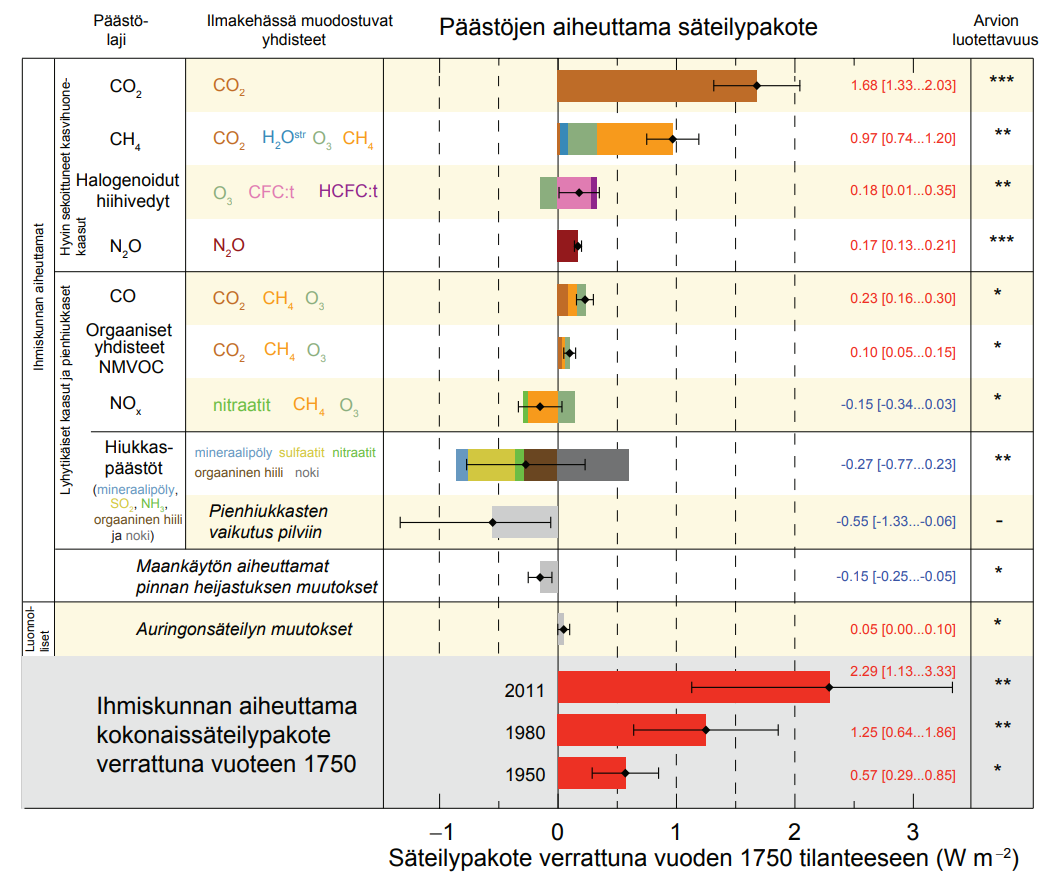
Photo: Minna-Kristiina Sassi
In addition to carbon dioxide (CO2), many air pollutants, such as fine particles, also have a significant impact on the climate. Especially particulate matter containing black carbon, also known as soot, has a warming effect, and it influences the Earth’s radiative forcing through several mechanisms.. Black carbon effectively absorbs sunlight, and emits heat radiation to the surrounding air. As black carbon is deposited on snow or ice, their surface darkens, resulting in reduced albedo and faster melting. In addition to these mechanisms, black carbon affects the climate by altering cloud formation processes and composition. Black carbon particles are classified as Short-Lived Climate Pollutants (SLCPs). Other such compounds include e.g. methane, sulfur dioxide and ozone. Some particles, such as sulfates formed by sulfur dioxide, reflect sunlight and have a cooling effect on the climate when in the atmosphere.
Temperatures in the Arctic are rising faster than in the rest of the world. As black carbon emissions accelerate global warming and the melting of snow and ice, limiting them has been considered an effective means of mitigating climate change, especially in the Arctic area. Reductions in black carbon emissions could also start to slow global warming relatively quickly, as particles typically remain in the atmosphere for only a few days. Cleaner fuels and more efficient combustion appliances for domestic heating and cooking, as well as particulate filters for diesel engines, are effective ways to reduce black carbon. Policy action is needed to support the uptake of mitigation measures.
Particulate emissions produced by human activity affect the amount of thermal radiation entering the earth through complex processes, some of which are still poorly understood. The balance between the energy reflected to space and the energy staying on the earth determines the temperature of the earth. The effect of various factors on equilibrium can be described by radiation forcing (see figure below). The uncertainties related to climate impact are particularly high (black segment) for particulate emissions. Because the effects are uncertain and some of the particles cool the climate, emission reductions can also cause undesirable results for the climate. On the other hand, particulate matter concentrations in the respiratory air cause enormous health and economic damage globally, which makes their reduction justified despite these uncertainties.

Fig. Radiative forcing estimates in 2011 relative to 1750 and aggregated uncertainties for the main drivers of climate change.(
IPCC WG1 AG5/2013 (pdf)).
The FRES research team uses calculation models to estimate the emissions of black carbon and other compounds from different sectors in Finland that affect the climate. The aim of the studies is to assess the future development of emissions and climate impacts, as well as the possibilities to reduce emissions and their environmental impact. In addition, the team members are participants in several international working groups as scientific experts and to support the Ministry of the environment. The working groups include:
Climate and Clean Air Coalition (CCAC)
The Climate and Clean Air Coalition is a voluntary partnership of governments, intergovernmental organizations, businesses, scientific institutions and civil society organizations committed to improving air quality and protecting the climate through actions to reduce short-lived climate pollutants
Arctic Council Expert Group on Black Carbon and Methane (EGBCM)
The objective of the expert group is to periodically assess progress of the implementation of the Arctic Council’s Framework for Action on Black Carbon and Methane, and to communicate with policy makers from Arctic states and participating Arctic Council Observer states.
AMAP SLCP Expert Group
Science-focused exert group under Arctic Monitoring and Assessment Programme (AMAP). The main task of the group is to produce assessment reports, such as: https://www.amap.no/documents/doc/amap-assessment-2015-black-carbon-and-ozone-as-arctic-climate-forcers/1299. The latest edition of the assessment report will be published in 2021.